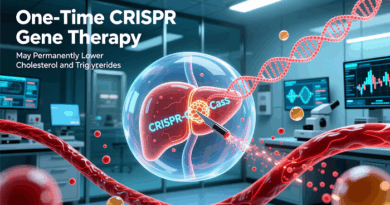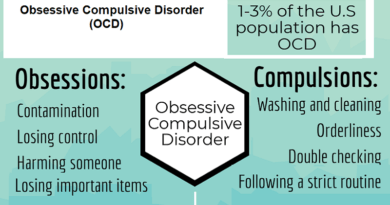Hypoxia: Breathless Beauty
But what happens when this life-sustaining resource becomes scarce, called hypoxia? Nature has an incredible way of balancing life’s elements, providing us with the air we breathe and sustaining our existence. Oxygen, the vital component of our atmosphere, fuels the fire within our bodies, allowing us to thrive. Welcome to the captivating world of hypoxia, where nature’s equilibrium is disrupted, and its effects on living organisms are both intriguing and potentially dangerous. In this article, we will explore the mysteries of this condition, exploring its causes, symptoms, and impact on various life forms.
Understanding the Essence of Hypoxia
Hypoxia, derived from the Greek words “hypo” meaning low and “oxys” meaning oxygen, is a condition characterized by an inadequate supply of oxygen to body tissues. It occurs when the oxygen levels in the blood and organs fall below normal, impairing their proper functioning. The causes of hypoxia can be diverse, ranging from atmospheric conditions to physiological abnormalities within the body.
Types of Hypoxia
a) Hypoxic Hypoxia:
This type of hypoxia arises due to reduced oxygen availability in the external environment, such as at high altitudes or in poorly ventilated spaces. Mountaineers, pilots, and individuals living in high-altitude regions often encounter hypoxic hypoxia, where the decrease in atmospheric oxygen levels limits the body’s ability to absorb sufficient oxygen.
b) Anemic Hypoxia:
In the anemic type, the blood’s oxygen-carrying capacity is compromised. This condition can result from various factors, including blood loss, anemia, or conditions that affect hemoglobin, such as sickle cell disease. Despite normal oxygen levels in the air, the body fails to transport adequate oxygen to tissues due to the diminished oxygen-carrying capacity of the blood.
c) Circulatory Hypoxia:
Circulatory hypoxia occurs when there is inadequate blood flow to tissues, leading to reduced oxygen delivery. Conditions like heart failure, shock, or arterial blockages can cause insufficient blood circulation, thereby preventing oxygen-rich blood from reaching organs and tissues.
d) Histotoxic Type
Histotoxic hypoxia arises when the body’s cells are unable to utilize the available oxygen effectively. Certain toxins or drugs, such as cyanide or carbon monoxide, interfere with the cellular machinery responsible for utilizing oxygen, impeding its beneficial effects.
Symptoms and Effects of Hypoxia
Symptoms may vary depending on the severity and duration of oxygen deprivation. Some common signs include shortness of breath, rapid breathing, increased heart rate, confusion, dizziness, and bluish discoloration of the skin or lips.
The impact of hypoxia on the body depends on several factors, including the affected tissues and the duration and extent of oxygen deprivation. Mild hypoxia may cause temporary discomfort, while prolonged or severe hypoxia can have more severe consequences. Vital organs like the brain, heart, and liver are particularly vulnerable to oxygen deprivation, and prolonged conditions can lead to tissue damage, organ failure, or even loss of life.
The Fascinating Adaptations of Life
Despite the potential dangers, nature has evolved remarkable adaptations to cope with hypoxic environments. Some aquatic species, such as certain fish and amphibians, possess specialized gills or lungs that enable them to extract oxygen efficiently from water or low-oxygen environments. High-altitude animals, like the Himalayan tahr or the bar-headed goose, have developed physiological mechanisms to thrive in oxygen-thin environments, including enhanced oxygen-carrying capacity and efficient oxygen utilization by their tissues.
Hypoxia’s Implications for Human Health
This condition extends beyond natural environments and is relevant to various medical conditions. Chronic lung diseases, such as chronic obstructive pulmonary disease (COPD), and conditions like sleep apnea, where breathing interruptions occur during sleep, can cause hypoxia.
Understanding this condition has also paved the way for medical advancements. Hyperbaric oxygen therapy, for example, involves exposing patients to increased atmospheric pressure and high levels of oxygen, aiding the delivery of oxygen to oxygen-starved tissues, promoting healing, and assisting with conditions like carbon monoxide poisoning or non-healing wounds.
SUMMARY
Hypoxia, a captivating yet potentially dangerous phenomenon, challenges our understanding of the delicate balance required for life to flourish. From its various types to the impact it has on living organisms, this condition remains a fascinating field of study. By unraveling its mysteries, scientists and medical professionals continue to unlock new insights into our complex relationship with oxygen, leading to better treatments, advancements in technology, and a deeper appreciation for the breathless beauty that surrounds us.
As we explore the diverse adaptations and implications of this condition, we gain a renewed respect for the preciousness of each breath we take, reminding us to cherish and protect the life-giving force that sustains us all.
If you suspect that you may have symptoms, Helalmedical can help, offering quick, private, and convenient testing options. You may contact us here: Facebook page.



